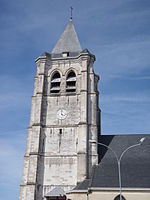Anstaing
Communes of Nord (French department)French FlandersNord (French department) geography stubs

Anstaing (French pronunciation: [ɑ̃stɛ̃]) is a commune in the Nord department in northern France.The name is probably of Germanic origin, meaning "village of Anst".
Excerpt from the Wikipedia article Anstaing (License: CC BY-SA 3.0, Authors, Images).Anstaing
Rue Marie Curie, Lille
Geographical coordinates (GPS) Address Nearby Places Show on map
Geographical coordinates (GPS)
| Latitude | Longitude |
|---|---|
| N 50.6058 ° | E 3.1917 ° |
Address
Rue Marie Curie
Rue Marie Curie
59152 Lille
Hauts-de-France, France
Open on Google Maps










